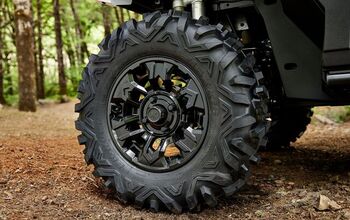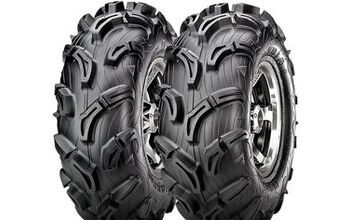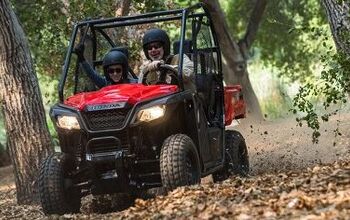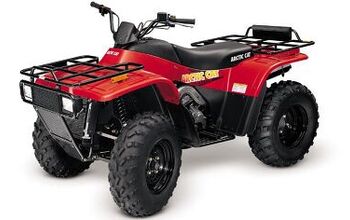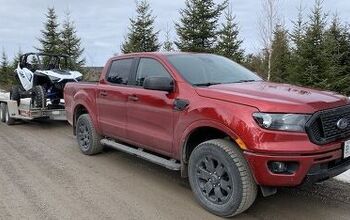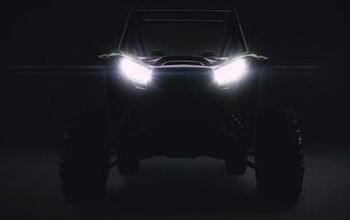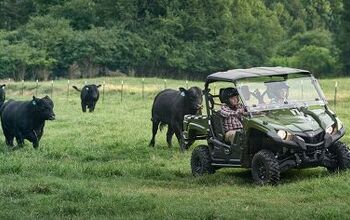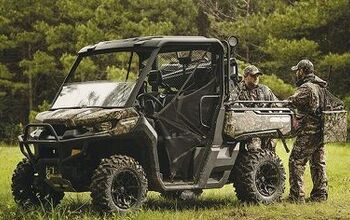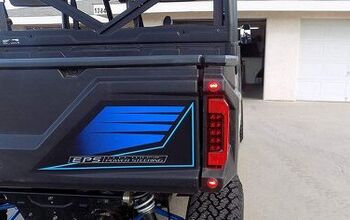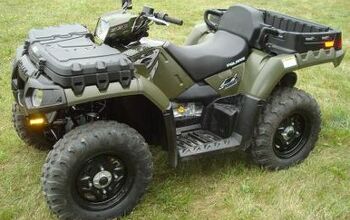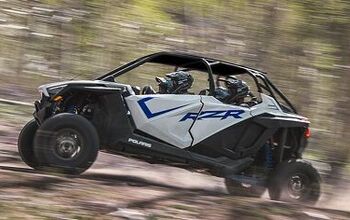Maxxis Razr Tires - Everything You Need To Know
Read all about the features, sizes, user reviews, and alternatives for this proven ATV tire
The quickest route to completely transforming your ATV’s performance isn’t a suspension lift kit or beefy shocks; it’s new shoes. As the only parts on your vehicle that actually touch the ground, your tires are responsible for an awful lot, ultimately determining how well your ATV can go, stop, and turn. These days, there are more ATV tire options than ever before, making it more possible than ever to find just the right set to suit your budget and performance needs. Yet with so many different models out there, it can be difficult to zero in on a winner. That’s where our “Everything You Need To Know” series comes in, equipping you with all the nitty gritty details you need in order to make an informed choice. Here, we’ll take a look at the Maxxis Razr Sport ATV tire line, discussing its features, available sizes, user reviews, and possible alternatives.
Table of Contents
1. Maxxis Razr Features
The original Maxxis Razr is a time-tested design that’s been proven both in the lab and in “the most demanding” cross-country championship series, according to the manufacturer. Its tread pattern should look familiar to most riders, consisting of far-spaced “X”-shaped tread blocks spread out over an otherwise smooth tire carcass, but as someone wise once said, “don’t fix what isn’t broken.” The Maxxis Razr is a versatile performer, adept at cross-country, intermediate terrain, hard pack, desert, and rocky trails, with a standard 4-ply rating that offers up some decent resistance to tears and punctures, yet remains lightweight for responsive riding.
Building on the success of the original Maxxis Razr, there’s the Razr Plus, which packs a more durable 6-ply-rated carcass and slightly more tread depth than the standard Razr. The tread design is more aggressive, too, with redesigned blocks featuring sizeable dimples to help with heat management, and angled shoulder knobs for improved steering and braking responsiveness.
For even more performance, there’s the Maxxis Razr Plus MX – a higher-traction design with revised tread blocks, positioned more closely together for optimized straight-line acceleration. The tire, developed with ATV Motocross champs Joel Hetrick and Chad Wienen, also features angled shoulder knobs that deliver improved steering and braking, with more predictable sliding performance.
And then, there’s the Maxxis Razr2, developed for an even wider breadth of terrains including loose pack trails, soft terrain, and mud. It delivers that with deeper tread lugs and a slightly tweaked tread block design. More importantly, the Razr2 is more puncture-resistant than its forebear, with the same 6-ply rating as many of the best, most trusted tires in the segment.
2. Available Tire Sizes
The Maxxis Razr tire range is aimed at ATVs, not UTVs, and sizes are limited to some of the more common rim diameters found on ATVs today, ranging from 8 to 11 inches. The range of overall heights offered is similarly restricted, running from 20 to 23.5 inches – or as short as 18.1 inches, in the case of the Maxxis Razr Plus MX. See the chart below for detailed information about available sizes.
| Size | Position | Ply Rating | Overall Diameter | Section Width | Max PSI | Rim Size | Tread Depth |
| Maxxis Razr | |||||||
| AT20x11-8 | Rear | 4 | 20” | 11.1” | 5 | 8×9” | 15/32” |
| AT22x11-8 | Rear | 4 | 22.4” | 10.8” | 5 | 8×9” | 15/32” |
| AT22x11-9 | Rear | 6 | 22.2” | 11.1” | 7 | 9×9” | 15/32” |
| AT20x11-9 | Rear | 4 / 6 | 20” / 20.4” | 11.1” / 10.9” | 5 / 7 | 9×9” | 15/32” |
| AT21x7-10 | Front | 4 / 6 | 21.3” / 21.5” | 7” / 6.9” | 5 / 7 | 10×5.5” | 15/32” |
| AT22x8-10 | Front | 4 | 22” | 8” | 5 | 10×6” | 15/32” |
| AT23x7-10 | Front | 4 / 6 | 23.4” / 23.5” | 7.3” / 7.2” | 5 / 7 | 10×5.5” | 15/32” |
| AT20x11-10 | Rear | 4 | 20” | 10.9” | 5 | 10×9” | 15/32” |
| AT22x7-10 | Front | 4 / 6 | 22.4” | 7” | 5 / 7 | 10×5.5” | 15/32” |
| AT22x11-10 | Rear | 4 / 6 | 22.4” | 11” | 5 / 7 | 10×9” | 15/32” |
| AT22x10-11 | Rear | 6 | 22” | 10” | 7 | 11×8” | 15/32” |
| Maxxis Razr Plus | |||||||
| AT20x11-8 | Rear | 6 | 20.2” | 11” | 7 | 8×9” | 16/32” |
| AT20x11-9 | Rear | 6 | 20” | 10.7” | 7 | 9×9” | 15/32” |
| AT22x11-9 | Rear | 6 | 22.4” | 11” | 7 | 9×9” | 16/32” |
| AT21x7-10 | Front | 6 | 21.3” | 6.8” | 7 | 10×5.5” | 19/32” |
| AT20x11-10 | Rear | 6 | 20.1” | 11” | 7 | 10×9” | 16/32” |
| AT22x7-10 | Front | 6 | 22.2” | 6.8” | 7 | 10×5.5 | 19/32” |
| Maxxis Razr Plus MX | |||||||
| AT18x10-8 | Rear | 4 | 18.1” | 10.2” | 5 | 8×8” | 15/32” |
| AT20x6-10 | Front | 4 | 20.1” | 5.9” | 5 | 10×5” | 15/32” |
| Maxxis Razr2 | |||||||
| AT20x11-9 | Rear | 6 | 20.4” | 11” | 7 | 9×9” | 20/32” |
| AT22x11-9 | Rear | 6 | 22.4” | 11” | 7 | 9×9” | 20/32” |
| AT22x11-10 | Rear | 6 | 22.4” | 11.1” | 7 | 10×9” | 20/32” |
| AT21x7-10 | Front | 6 | 20.4” | 6.7” | 7 | 10×5.5” | 19/32” |
| AT22x7-10 | Front | 6 | 22.4” | 6.7” | 7 | 10×5.5” | 19/32” |
| AT23x7-10 | Front | 6 | 23.4” | 6.9” | 7 | 10×5.5” | 19/32” |
| AT20x11-10 | Rear | 6 | 20.4” | 11” | 7 | 10×9 | 20/32” |
3. Alternatives
There are several solid alternatives to the Maxxis Razr tire line on the market, one of which is the ITP Holeshot series. Utilizing a similar tread design with far-spaced, “X”-shaped tread blocks that bite in all different directions, the Holeshot is similarly versatile, counting hard pack, intermediate terrain, desert, rocks, ruts, and even mud among its terrain specialties. The ITP Holeshot is a more expansive product line than the Maxxis Razr, with eight distinct designs, including one radial version, and a few two-ply-rated models that are perfect for soft and loose terrain. At the same time, available tire sizes are actually more limited than with the Maxxis Razr, so finding the right size for your machine may prove to be more difficult.
Another option is the well-known Carlisle AT489. It’s a staple of the powersports industry and one of the most common factory replacement tires, owing to its affordable price and sensible balance between light weight and puncture resistance. The tread design is markedly different from those found on the Maxxis Razr and ITP Holeshot, but it’s a similarly versatile tire, with a mix of 4-ply- and 6-ply-rated models for wheels ranging from 10 to 12 inches in diameter, and a penchant for everything from soft and intermediate surfaces to hard pack, and even mud. But like with the ITP Holeshot, available sizes are limited, so finding a set of AT489s to work with your ride may be tough.
4. User Reviews
To get a sense of just how the Maxxis Razr performs in the wild, we’ve searched high and low for every user review we could find, looking for common themes to shed light on the overall Razr user experience.
The Maxxis Razr has received near-universal praise from real-life owners, with users applauding the tire’s traction and wear characteristics. One review we came across directly compared the Maxxis Razr favorably to the ITP Holeshot, calling it a “MUCH better tire” with more predictable handling and far longer tread wear, and while it carries a relatively large price tag, owners all seemed to agree that the quality is well worth the cost.
Granted, there is a difference between 4- and 6-ply-rated Razr tires, and on that front, the common consensus seems to be that 6-ply is the way to go. Although slightly heavier, they’re more durable and boast significantly stronger sidewalls.
As for ride and handling, the verdict is that the Maxxis Razr tire line delivers loads of traction in all sorts of conditions, but that it’s happy to slide when asked. Just about its only weakness in terms of performance, according to reviews, is its modest ability to self-clean in muddy conditions. But as a versatile all-terrain tire without a mud focus, that’s not surprising.
Aaron is a freelance writer, videographer and car enthusiast based out of the Detroit area. He has a special affinity for the Porsche 944 series, and once owned a Volvo 240 sedan with a Weber carb in place of the factory EFI system. His work has appeared on AutoGuide, GM Authority, /Drive, and VW Vortex, among other sites.
More by Aaron Brzozowski
















